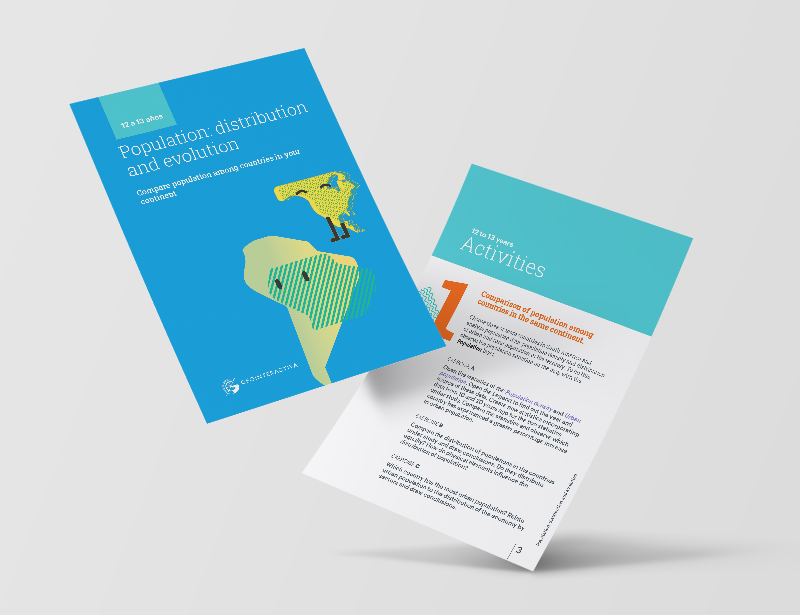
secondary (12-13 years).
The distribution and evolution of the population
In this activity, you will learn how the distribution of the population, its density, and its evolution are fundamental factors to understand the society, its development, and the culture of a region.
In this downloadable resource, you will find a PDF with instructions to enhance your classes. On one hand, we show you which platform tool you will work with, and on the other hand, we offer activities suitable for 12-13-year-old students.
Do you want your classes to be stimulating ? Start today with Geointeractive.
we suggest teaching geography in a fun way.
What will your students learn from this educational activity?
The importance of population distribution and evolution
Population is one of the most important and studied topics in geography. The distribution of the population, its density, and its evolution are fundamental factors for understanding the society and culture of a region. In this article, we will address the distribution of the population in the territory, the difference between urban and rural population, population density, and its evolution.
Distribution of the population in the territory
The distribution of the population in the territory refers to how the population is distributed in a particular place. The population is not evenly distributed worldwide, with some areas more densely populated than others. The main reasons for this unequal distribution are geography, climate, the availability of natural resources, and history.
Most of the world’s population lives in urban areas, that is, in cities. In general, cities are more populated than rural areas, but this is not always the case. In some countries, the rural population is larger than the urban population. In any case, the population concentrates in certain places where conditions are more favorable.
Urban and rural population
The population can be classified into two broad categories: urban population and rural population. Urban population refers to people living in cities, while rural population refers to people living in rural areas, i.e., in towns and the countryside.
The urban population has grown significantly in recent decades due to the process of urbanization. Urbanization refers to the increase in the urban population and the expansion of cities. This process is related to economic growth and industrial development, which attract people to cities in search of work and better living conditions.
On the other hand, the rural population has decreased in many countries due to migration to cities. This has generated problems in rural areas, such as an aging population and a lack of services and job opportunities.
Population density
Population density refers to the number of inhabitants per unit of area. It is an important measure for analyzing the distribution of the population and the pressure it exerts on the territory.
Population density varies greatly from country to country and within the same country. The most densely populated countries are those with a high urban population and a small surface area. In contrast, the least densely populated countries are those with a low urban population and a large surface area.
Population density also varies within a country. In general, the most populated areas are metropolitan areas, where the urban population concentrates. In contrast, rural areas have a lower population density.
Evolution of the population
The evolution of the population refers to the changes that occur in the population over time. To analyze these changes, statistical data such as the birth rate, mortality rate, migration rate, and population growth rate are used. This data allows for projections of how the population is expected to change in the future and for planning public policies to address the challenges that may arise.
It is important for students to understand the importance of the distribution of the population and its evolution in the territory, as this can have a significant impact on the economy, politics, and the environment. Additionally, it can affect the quality of life of people living in different geographic areas.
Conclusions
In summary, population is an important topic in the teaching of geography as it allows students to understand the distribution of the population in the territory, its density, and its evolution through statistical data. With a deeper understanding of the population, students can develop critical awareness of the social, economic, and political implications that population can have in different geographic areas. Additionally, they can analyze how demographic changes may affect society in the future and how public policies can be implemented to address the challenges that arise.